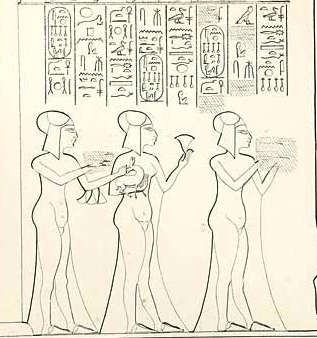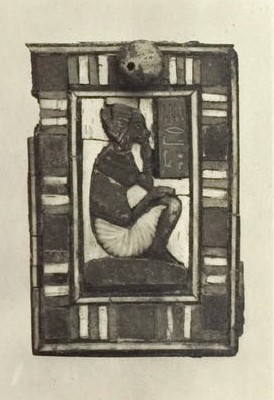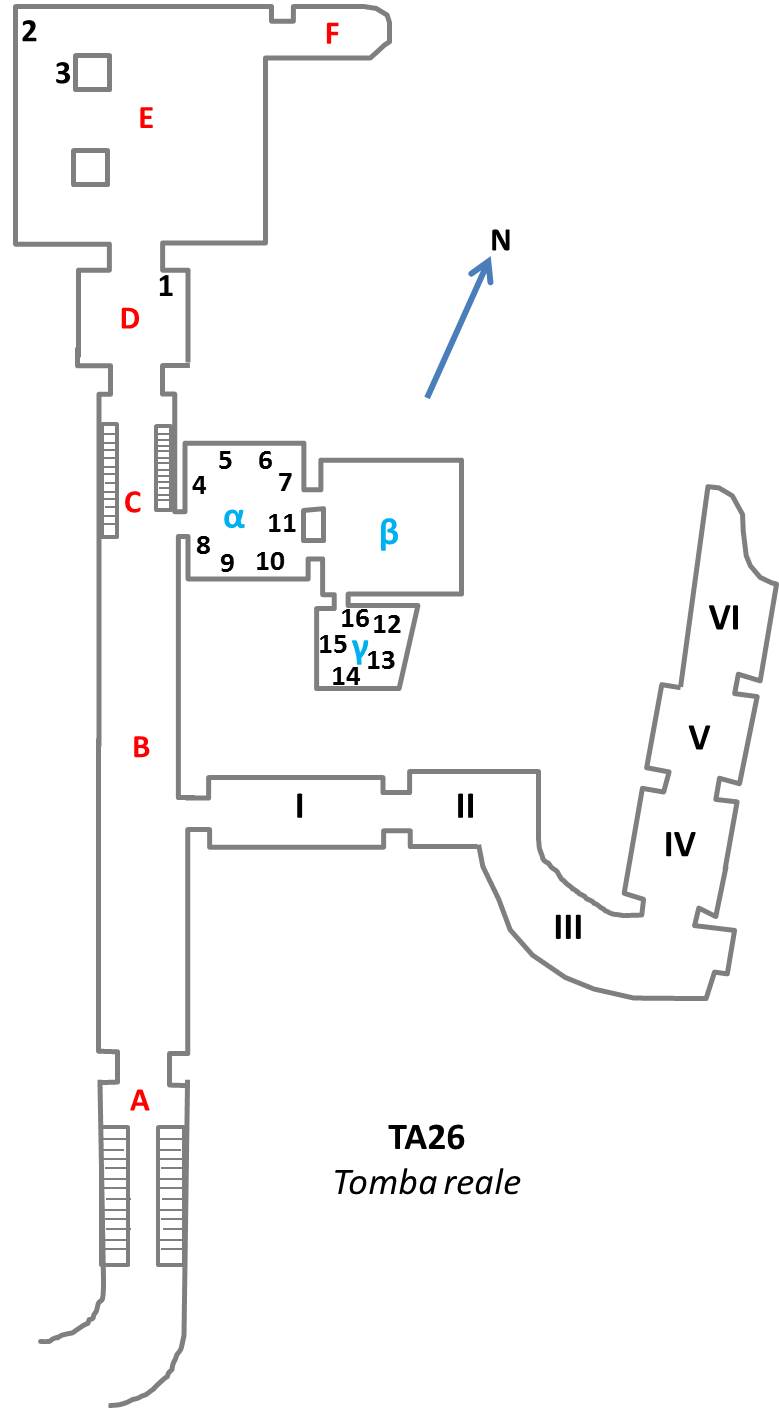|
Neferneferuaten Tasherit
Neferneferuaten Tasherit or Neferneferuaten the younger (, meaning ''most beautiful one of Aten – younger'') (14th century BCE) was an ancient Egyptian princess of the 18th Dynasty and the fourth daughter of Pharaoh Akhenaten and his Great Royal Wife Nefertiti. Family Neferneferuaten was born between c. year 8 and 9 of her father's reign. She was the fourth of six known daughters of the royal couple. It is likely that she was born in Akhetaten, the capital founded by her father. Her name ''Neferneferuaten'' ("Beauty of the Beauties of Aten" or "Most Beautiful One of Aten") is the exact copy of the name Nefertiti took in the 5th regnal year. ("Ta-sherit" simply means "the younger").Tyldesley, Joyce. Nefertiti: Egypt's Sun Queen. Penguin. 1998. She had three older sisters named Meritaten, Meketaten, and Ankhesenpaaten (later known as Ankhesenamun), and two younger sisters named Neferneferure and Setepenre.Dodson, Aidan and Hilton, Dyan. The Complete Royal Families of Ancient ... [...More Info...] [...Related Items...] OR: [Wikipedia] [Google] [Baidu] |
Neferneferure
Neferneferure ( "beautiful are the beauties of Re") (14th century BCE) was an ancient Egyptian princess of the 18th Dynasty. She was the fifth of six known daughters of Pharaoh Akhenaten and his Great Royal Wife Nefertiti. Family Neferneferure was born during the 8th or 9th regnal year of her father Akhenaten in the city of Akhetaten.Tyldesley, Joyce. Nefertiti: Egypt's Sun Queen. Penguin. 1998. She had four older sisters named Meritaten, Meketaten, Ankhesenpaaten and Neferneferuaten Tasherit, as well as a younger sister named Setepenre.Dodson, Aidan and Hilton, Dyan. The Complete Royal Families of Ancient Egypt. Thames & Hudson. 2004. Life One of the earliest depictions of Neferneferure is in a fresco from the King's House in Amarna. She is depicted sitting on a pillow with her sister Neferneferuaten Tasherit. The fresco is dated to c. year 9 of Akhenaten, and the entire family is depicted, including the baby Setepenre. Neferneferure is depicted at the Durbar in yea ... [...More Info...] [...Related Items...] OR: [Wikipedia] [Google] [Baidu] |
Huya (Noble)
Huya () was an Ancient Egypt, Egyptian noble living around 1350 BC. He was the "Superintendent of the Royal Harem", "Superintendent of the Treasury" and "Superintendent of the House", all titles that are associated with Queen Tiye, mother of Akhenaten. He had a tomb--Amarna Tomb 1--constructed in the Tombs of the Nobles (Amarna), Northern cemetery at Amarna, although his remains have never been identified. His tomb contained a large amount of material about the royal family and the Aten cult, including a ''Hymn to the Aten''.Michael Rice, ''Who's Who in Ancient Egypt'', Routledge 2001, , p.73 References External linksNorthern tomb no. 1 of Huya  Officials of the Eighteenth Dynasty of Egypt
14th-century BC Egyptian people
{{AncientEgypt-bio-stub ...
Officials of the Eighteenth Dynasty of Egypt
14th-century BC Egyptian people
{{AncientEgypt-bio-stub ...
[...More Info...] [...Related Items...] OR: [Wikipedia] [Google] [Baidu] |
14th-century BC Egyptian Women
The 14th century lasted from 1 January 1301 (represented by the Roman numerals MCCCI) to 31 December 1400 (MCD). It is estimated that the century witnessed the death of more than 45 million lives from political and natural disasters in both Europe and the Mongol Empire. West Africa experienced economic growth and prosperity. In Europe, the Black Death claimed 25 million lives wiping out one third of the European population while the Kingdom of England and the Kingdom of France fought in the protracted Hundred Years' War after the death of King Charles IV of France led to a claim to the French throne by King Edward III of England. This period is considered the height of chivalry and marks the beginning of strong separate identities for both England and France as well as the foundation of the Italian Renaissance and the Ottoman Empire. In Asia, Tamerlane (Timur), established the Timurid Empire, history's third largest empire to have been ever established by a single conqueror. ... [...More Info...] [...Related Items...] OR: [Wikipedia] [Google] [Baidu] |
Princesses Of The Eighteenth Dynasty Of Egypt
Princess is a title used by a female member of a regnant monarch's family or by a female ruler of a principality. The male equivalent is a prince (from Latin ''princeps'', meaning principal citizen). Most often, the term has been used for the consort of a prince, or for the daughter of a monarch. A crown princess can be the heir apparent to the throne or the spouse of the heir apparent. Princess as a substantive title Some princesses are reigning monarchs of principalities. There have been fewer instances of reigning princesses than reigning princes, as most principalities excluded women from inheriting the throne. An example of a princess regnant is Constance of Antioch, princess regnant of Antioch in the 12th century. Since the president of France, an office for which women are eligible, is ''ex-officio'' a co-prince of Andorra, then Andorra could theoretically be jointly ruled by a princess. Princess as a courtesy title Descendants of monarchs For many centuries, the t ... [...More Info...] [...Related Items...] OR: [Wikipedia] [Google] [Baidu] |
Göttinger Miszellen
''Göttinger Miszellen'' (often abbreviated as GM) is a scientific journal published by the Seminar für Ägyptologie und Koptologie of the University of Göttingen,Germany which contains short scholarly articles on Egyptological, Coptological, and other related subjects. Founded in 1972, its aim is to publish information about new discoveries and theories as quickly and efficiently as possible, and to be a forum for scholarly discussions on Egyptology. In line with this philosophy, GM is published at least four times a year, and contributors (who may submit articles in German, English or French) are required to submit camera-ready copy, as articles are reproduced photographically rather than being re-typed or loaded from diskette. Copy is not edited at all by the publishers and is the verbatim work of each author. Each issue is approximately 112 pages in length and costs 4.50 euro The euro (currency symbol, symbol: euro sign, €; ISO 4217, currency code: EUR) is the ... [...More Info...] [...Related Items...] OR: [Wikipedia] [Google] [Baidu] |
Neferneferuaten
Ankhkheperure-Merit-Neferkheperure/Waenre/Aten Neferneferuaten (), or "Neferneferuaten", is the name of a queen regnant ('female pharaoh, king') of ancient Egypt who reigned in her own right near the end of the Amarna Period during the Eighteenth dynasty of Egypt, Eighteenth Dynasty. Her name features feminine Grammatical gender, gender traces; and one of her epithets was ''Akhet-en-hyes'' ("Effective for her husband"). This epithet also features in one version of her Nomen (ancient Egypt), nomen (birth name) cartouche. (See Ancient Egyptian royal titulary.) She is distinguished from the king Smenkhkare, with whom she shared the prenomen (throne name) ''Ankhkheperure'', by the presence of epithets in both cartouches. It has been suggested that she was in fact Smenkhkare's wife Meritaten or his predecessor Akhenaten's widow Nefertiti. The Golden Nut Pectoral (Carter no. 261p1) The golden Nut Pectoral (Ancient Egypt), pectoral (Carter no. 261p1) was also reused for the funeral o ... [...More Info...] [...Related Items...] OR: [Wikipedia] [Google] [Baidu] |
James Peter Allen
James Peter Allen (born April 22, 1945) is an American Egyptologist, specializing in language and religion. He was curator of Egyptian Art at the Metropolitan Museum of Art from 1990 to 2006. In 2007, he became the Charles Edwin Wilbour Professor of Egyptology at Brown University. In 2008, he was elected president of the International Association of Egyptologists. He received his PhD from the University of Chicago of Near Eastern Languages and Civilizations. Early life and education The oldest of three siblings, Allen was born according to his wife Susan, "into the U.S. Army" ... as his father proposed to his mother on an Army requisition form when his father was stationed in Burma. Both parents were in the U.S. Army and Allen was two weeks old when World War 2 ended in Europe. The family moved to Frankfurt, Germany where Allen learned to speak fluent German. In 1953, the family moved to San Antonio, Texas. When the family moved to Baltimore, Allen "bought a copy of Mercer’s ... [...More Info...] [...Related Items...] OR: [Wikipedia] [Google] [Baidu] |
Tutankhamun
Tutankhamun or Tutankhamen, (; ), was an Egyptian pharaoh who ruled during the late Eighteenth Dynasty of Egypt, Eighteenth Dynasty of ancient Egypt. Born Tutankhaten, he instituted the restoration of the traditional polytheistic form of ancient Egyptian religion, undoing a previous shift to the religion known as Atenism. Tutankhamun's reign is considered one of the greatest restoration periods in ancient Egyptian history. His endowments and restorations of cults were recorded on what is today known as the Restoration Stela. The cult of the god Amun at Thebes, Egypt, Thebes was restored to prominence, and the royal couple changed their names to "Tutankhamun" and "Ankhesenamun", replacing the -aten suffix. He also moved the royal court from Akhenaten's capital, Amarna, back to Memphis, Egypt, Memphis almost immediately on his accession to the kingship. He reestablished diplomatic relations with the Mitanni and carried out military campaigns in Nubia and the Near East. Tutankh ... [...More Info...] [...Related Items...] OR: [Wikipedia] [Google] [Baidu] |
Amarna
Amarna (; ) is an extensive ancient Egyptian archaeological site containing the ruins of Akhetaten, the capital city during the late Eighteenth Dynasty. The city was established in 1346 BC, built at the direction of the Pharaoh Akhenaten, and abandoned shortly after his death in 1332 BC. The site is on the east bank of the Nile River, in what today is the Egyptian province of Minya. It is about south of the city of al-Minya, south of the Egyptian capital, Cairo, and north of Luxor (site of the previous capital, Thebes). The city of Deir Mawas lies directly to its west. On the east side of Amarna there are several modern villages, the chief of which are l-Till in the north and el-Hagg Qandil in the south. Activity in the region flourished from the Amarna Period until the later Roman era. Name The name ''Amarna'' comes from the Beni Amran tribe that lived in the region and founded a few settlements. The ancient Egyptian name means " the horizon of the Aten".David (199 ... [...More Info...] [...Related Items...] OR: [Wikipedia] [Google] [Baidu] |
Royal Tomb Of Akhenaten
The Royal Tomb of Akhenaten is a multichambered tomb in the Royal Wadi east of Amarna, Egypt, where members of the Amarna Period royal family were originally buried. Akhenaten was an Eighteenth Dynasty pharaoh who reigned for seventeen years (1355-1338 BC) from his capital city of Akhetaten, known today as Amarna. The Royal Tomb was rediscovered in the 1880s; however, the exact year and who discovered it is up for debate. Excavations and research into the tomb began in 1891 and continue to this day. The location of the Royal Tomb, the tomb itself, the artifacts contained within the tomb, and the destruction of parts of the Royal Tomb after Akhenaten's death provide researchers with valuable insights into Akhenaten's reign, including the political environment, and the Amarna Period. Akhenaten's burial chamber can easily be detected in his royal tomb at Amarna since it is the only tomb which was fully finished; the rest of the tomb consists of unfinished rock cut tomb chambers and ... [...More Info...] [...Related Items...] OR: [Wikipedia] [Google] [Baidu] |
Baketaten
Beketaten () (14th century BCE) was an ancient Egyptian princess of the 18th Dynasty. Beketaten is considered to be the youngest daughter of Pharaoh Amenhotep III and his Great Royal Wife Tiye, thus the sister of Pharaoh Akhenaten.Aidan Dodson & Dyan Hilton, The Complete Royal Families of Ancient Egypt, Thames & Hudson (2004), p.154 Her name means "Handmaid of Aten". Family Beketaten was most likely the youngest daughter of Amenhotep III and Tiye. This would mean their other children were her siblings, including Prince Thutmose, the Pharaoh Akhenaten, Sitamun, Isis, Henuttaneb, and Nebetah. Some scholars have speculated that Nebetah was identical with Beketaten. However, no evidence proves that they are the same person. It has also been suggested that she might be the daughter of Akhenaten and his secondary wife, Kiya. Kiya is shown on a few occasions with a princess whose name ends in -''aten''. However, the full name of the princess has been lost. It has been speculated that ... [...More Info...] [...Related Items...] OR: [Wikipedia] [Google] [Baidu] |







